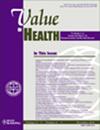美国房颤的处方药使用和支出。
IF 4.9
2区 医学
Q1 ECONOMICS
引用次数: 0
摘要
目的:了解全国非住院房颤人群抗凝剂、抗心律失常药物(AAD)及支出趋势。方法:对2016年1月至2021年12月的医疗支出小组调查(MEPS)进行查询,使用ICD-10-CM代码“I48”识别诊断为房颤的成年人(年龄≥18岁)。估计了美国临床环境中抗凝血剂、AAD的患病率及其支出和AF支出。使用多变量logistic回归分析确定抗凝剂使用的预测因素。结果:共鉴定出1730万名房颤成年人,其中46.5%为女性,89.6%为白人,约70%为中等/高收入人群,普遍存在高血压(75.3%)和冠心病(30%)合并症。平均CHA2DS2 VASc评分为3.2分,40%评分≥4分。在美国,每位患有房颤的成年人每年平均花费26103美元(经2021年通货膨胀调整后)用于健康相关支出。直接口服抗凝剂(DOAC)和I类AAD使用的流行率有所增加;相反,维生素K拮抗剂(VKA)的使用有所下降。doac相关的人均年支出从2016年的849美元增加到2021年的1929美元。在CHA2DS2 VASc评分≥2的患者中,女性和存在冠心病与使用抗凝血剂的可能性较低相关。结论:房颤是一种昂贵的疾病,处方药的使用,如DOACs和III类aad,是重要的贡献者。本文章由计算机程序翻译,如有差异,请以英文原文为准。
Prescription Medication Use and Expenditure for Atrial Fibrillation in the United States
Objectives
To study the national trends of anticoagulants, antiarrhythmic drugs (AADs), and expenditures in the civilian noninstitutionalized atrial fibrillation (AF) population.
Methods
The Medical Expenditure Panel Survey was queried from January 2016 to December 2021 to identify adults (age ≥18 years) with a diagnosis of AF utilizing the International Classification of Diseases, Tenth Revision, Clinical Modification code I48. Prevalence of anticoagulants (AAD) and its expenditure and AF expenditure across clinical settings in the United States were estimated. The predictors of anticoagulant use were identified utilizing multivariate logistic regression analysis.
Results
A total of 17.3 million AF adults were identified, of which 46.5% were female, 89.6% were White, and ∼70% were middle/high income with prevalent comorbidities of hypertension (75.3%) and coronary heart disease (30%). The mean CHA2DS2 VASc score was 3.2, and 40% had a score of ≥4. In the United States, an average of $26 103 (2021 inflation adjusted) was spent per year per adult with AF for health-related expenditures. The prevalence of direct oral anticoagulants (DOACs) and class I AAD use has increased; in contrast, vitamin K antagonists use has declined. DOAC-related per person annual expenses increased from $849 in 2016 to $1929 in 2021. In those with a CHA2DS2 VASc score of ≥2, female sex and the presence of coronary heart disease were associated with a lower likelihood of anticoagulant use.
Conclusions
AF is a costly condition in which prescription medication use, such as DOACs and class III AADs, are significant contributors.
求助全文
通过发布文献求助,成功后即可免费获取论文全文。
去求助
来源期刊

Value in Health
医学-卫生保健
CiteScore
6.90
自引率
6.70%
发文量
3064
审稿时长
3-8 weeks
期刊介绍:
Value in Health contains original research articles for pharmacoeconomics, health economics, and outcomes research (clinical, economic, and patient-reported outcomes/preference-based research), as well as conceptual and health policy articles that provide valuable information for health care decision-makers as well as the research community. As the official journal of ISPOR, Value in Health provides a forum for researchers, as well as health care decision-makers to translate outcomes research into health care decisions.
 求助内容:
求助内容: 应助结果提醒方式:
应助结果提醒方式:


